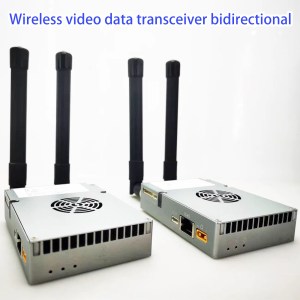IP mesh Type wireless video transmitter le receiver e na le liphetolelo tse tharo sebakeng sa phetisetso, 3km SE, 5km SE, le 50km.
Lisebelisoa tsa rona tse tsebahalang tsa IP-Mesh, sehlopha se le seng, Multi-node IP network, li sebelisoa bakeng sa phetiso ea marang-rang ea mofuta oa linaleli tse tšoanang. Transmitter e tsamaisanang le One to One li sebelisoa mekhoeng ea phetisetso ea video e se nang mohala. Seea-le-moea se seng le se seng sa marang-rang a marang-rang se ntse se tsoela pele ho sebetsa e le sefetisi le moamoheli, ke ka hona ba bitsoang “nodes.” Ho eketsa li-node ho sistimi ho eketsa maemo a bonolo, ho o dumella ho haha scalable, ho ipokella, marangrang a lisebelisoa tse ipholisang.
The Time Division Multiple Access (TDMA) protocol e sebelisoa ke IP-Mesh Broadcast Systems ea rona. Re sebelisa mokhoa o laoloang ke li-channel o laoloang ke li-tokens moo node e 'ngoe le e 'ngoe ea marang-rang e abetsoeng sebaka sa phetisetso. E ipapisitse le liparamente tsa marang-rang le sephethephethe sa data, tokens are passed from one node to another. Ka hoo, if a node has more data to transmit, its time slots will be longer. The designated node in the path to the final destination can be a data endpoint or a repeater.
IP-Mesh is constantly adapting to node traffic, determining which nodes are in range, and determining the best path to send data without compromising signal stability or video quality. If a node becomes inoperable, the remaining nodes can still communicate with one another by acting as a relay for the downed node.
Litsela tse peli tse peli








